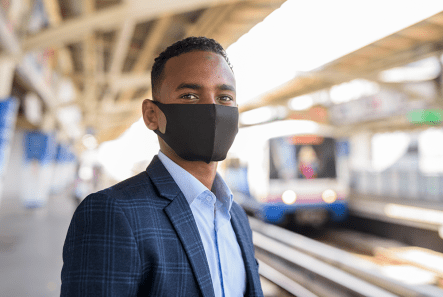Most people are aware of the challenges that the pandemic has posed for operators and customers of U.S. airlines, which moved 927 million passengers in 2019. How about train travel, which 32.5 million passengers – more than the population of Texas – chose during the 2019 fiscal year? As national railroad service Amtrak begins to recover from a 95% drop in ridership at the outset of the pandemic (vs. 96% for U.S. airlines), does it represent a viable alternative for travelers skittish about waiting in crowded airport check-in lines and being in an enclosed space at 35,000 feet? John Marroni, owner of National Restoration, thinks so. “While not ideal, as the lesser of the evils, trains are a moderately safer method of travel during this pandemic” than other transportation options. They’re also easier to disinfect because “the turnover per person is not as frequent as other means of public transportation,” says Marroni, whose Cherry Hill, N.J., company provides construction and painting services for properties suffering fire and water damage and also offers COVID-19 sanitation services. Safety measures instituted by Amtrak include mask requirements for staff and passengers, social distancing and protective plastic barriers. Trains have onboard filtration systems with a fresh air exchange rate every four to five minutes. Cleaning protocols encompass every seat, private room, baggage rack, bathroom, button, café car, dining car and other publicly shared spaces using an EPA-registered disinfectant before the train leaves. Amtrak maintenance crews also spray and wipe down all major touchpoints, including bathrooms, every couple of hours. It’s important, says Dr. Thomas Russo, chief of the division of infectious disease at the University at Buffalo, “to remember that most of the transmission of the coronavirus is respiratory.” That means following U.S. Centers for Disease Control and Prevention...

